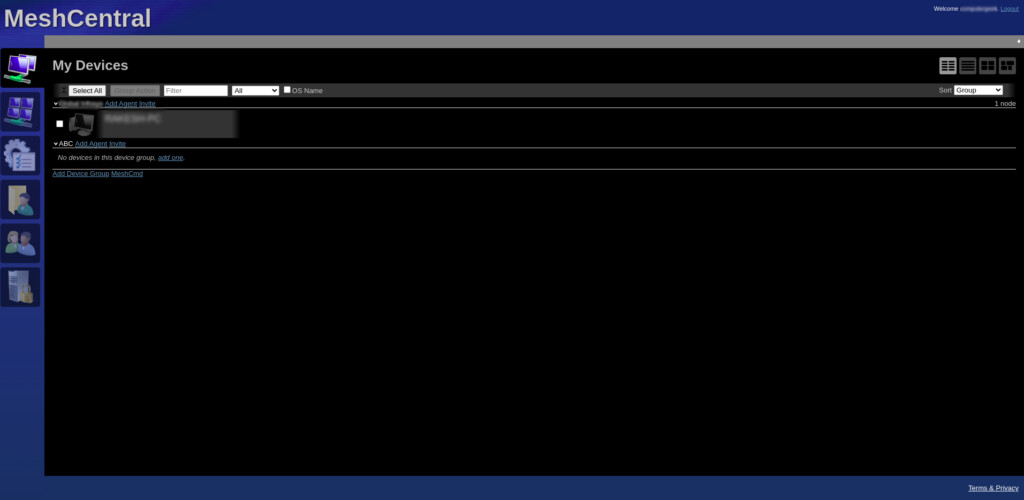Introduction
The digital world introduced the ability to manage systems remotely, changing how businesses work. The ability to manage computer systems from a remote distance, sometimes from another geographical area, is called remote management. This support is handy because it allows IT personnel to remotely monitor, maintain, and repair systems without their physical presence, saving time and resources.

Why use Remote Management?
- Efficiency and Speed: Remote management helps respond to an issue quickly and on time without any delay, thus lowering downtime and increasing productivity.
- Cost Reduction: It helps reduce travel and on-site maintenance costs, ultimately decreasing the company’s operational costs.
- Scalability: It provides the capability to manage a substantial number of devices or systems from a single or central location, which fits business requirements on the growth path.
- Flexibility: IT personnel can address problems and make updates outside a company’s regular business hours with minimal interruption.
MeshCentral is one immensely powerful and adaptable profile tool among the wide range of solutions available for remote administration.
MeshCentral

MeshCentral is a powerful, flexible, and full-featured open-source solution for network and device management. This powerful tool enables the management and monitoring of devices based on Windows, Linux, and macOS from a central web-based interface.
What is MeshCentral?
Intel’s Ylian Saint-Hilaire developed MeshCentral, which matured and developed further since its first release. Basically, it is part of the more vital Mesh project, which incorporates other utilities like MeshCommander and MeshAgent. The project aims to achieve a completely functional and self-hosted remote management solution that would be available and convenient for both small businesses and enterprises.

Core Functionalities and GUI
An extremely attractive and user-friendly interface tool on MeshCentral makes it very easy for users to navigate and control remote devices. The dashboard clearly shows all connected devices so users can view their status and perform actions like remote reboot, file transfer, or live chat.
Security Features In a world of paramount concern over cybersecurity, MeshCentral is beefed up with some of the latest security features:
- End-to-End Encryption: This ensures that any communication between the MeshCentral server and the remote devices remains encrypted and safe, thus protecting sensitive data.
- Two-Factor Authentication: MeshCentral supports 2FA, adding an extra layer of security for accessing the management console.
Role-Based Access Control: Users can define roles and permissions, ensuring that team members have appropriate access levels to the network and devices.
Advantages of using MeshCentral
- Accessibility: MeshCentral enables device access from anywhere at any time; such is the power of a secure web interface environment.
- No Dependency on Third-party Services: It works alone without the intervention of third parties, so data and security features are completely controlled.
- Complete Support for Devices: It is compatible with Windows, Linux, MacOS, and many other platforms, making it broadly applicable.
Features of MeshCentral
MeshCentral comes loaded with quite a few features that help it not be just another remote device management tool:
- Real-time Device Monitoring: It tracks system performance and health in real-time, ensuring that all issues are promptly identified and addressed.
- File Transfer: It provides a secure way of transferring files to and from remote devices, making the updating and patching processes more effortless.
- Remote Desktop: It offers remote desktop capabilities, allowing full control over the remote desktop interface of the system.
- Command Line Access: It enables direct access to the command-line interface of managed devices, ideal for deep-dive troubleshooting.
- Power Management: It allows remote power management, including turning the devices on or off and rebooting systems.
- User and Device Grouping: It allows users and devices to be assembled into groups for organized administration and settings tailored to control.
- Event and Alarm Management: It warns administrators of critical issues or system failures and, therefore, greatly improves overall system reliability.
Installing MeshCentral using Docker Compose
Running MeshCentral on infrastructure is readily done using Docker. It packages the entire application into a single unit, ensuring it runs identically wherever it is deployed in computing. The following sections explain how to install MeshCentral with the help of Docker Compose.
Docker Compose Configuration for MeshCentral
Here’s a breakdown of the Docker Compose file to deploy MeshCentral:
version: '3'
services:
meshcentral:
restart: always
container_name: meshcentral
image: typhonragewind/meshcentral:latest
ports:
- 8086:443 # Exposed on 8086 to avoid conflicts and managed by Nginx Proxy Manager
environment:
- HOSTNAME=yourdomain.com # Your domain
# - REVERSE_PROXY=true # Indicates usage of a reverse proxy
# - REVERSE_PROXY_IP=123.123.123.123 # IP address of the reverse proxy
# - REVERSE_PROXY_TLS_PORT=443
- IFRAME=true # Enables iframe support if needed
- ALLOW_NEW_ACCOUNTS=true # Disables self-service account creation
- WEBRTC=true # Enables WebRTC for better connectivity
- TZ=Asia/Kolkata # Configures the container to the Your time zone
volumes:
- ./meshcentral/data:/opt/meshcentral/meshcentral-data # Directory for data persistence
- ./meshcentral/user_files:/opt/meshcentral/meshcentral-files # Directory for user file uploadsStep-by-Step Installation Guide
Ensure you follow this guide to install MeshCentral using Docker Compose.
1. Create a directory structure
Ensure that the directories meshcentral/data and meshcentral/user_files exist on your host machine. These directories will be mapped to the container for data persistence and file uploads.
2. Install Docker
sudo apt-get update
sudo apt-get install ca-certificates curl
sudo install -m 0755 -d /etc/apt/keyrings
sudo curl -fsSL https://download.docker.com/linux/ubuntu/gpg -o /etc/apt/keyrings/docker.asc
sudo chmod a+r /etc/apt/keyrings/docker.asc
#Add the repository to Apt sources:
echo \
"deb [arch=$(dpkg --print-architecture) signed-by=/etc/apt/keyrings/docker.asc] https://download.docker.com/linux/ubuntu \
$(. /etc/os-release && echo "$VERSION_CODENAME") stable" | \
sudo tee /etc/apt/sources.list.d/docker.list > /dev/null
sudo apt-get update
sudo apt-get install docker-ce docker-ce-cli containerd.io docker-buildx-plugin docker-compose-plugin
sudo apt install docker-ce
sudo usermod -aG docker ${USER}
newgrp dockerHere is the official documentation to install docker compose on various operating systems. The above code can help install docker on Ubuntu, create a group called docker, and add the current user to the docker group so that the docker command can run without sudo permission.
3. Configure the Environment (optional)
The environment variables for the Docker Compose file can be set based on the requirement and infrastructure. The most important of these environment variables are ‘HOSTNAME’, which can be set to the domain and ‘REVERSE_PROXY_IP’, which can be set to the proxy server.
4. Deploy MeshCentral
You need to run the command given below in the same directory where your docker-compose.yml file is present.
docker compose up -d && docker compose logs -fThis command will start the MeshCentral and show the logs that can help in the debugging process. To stop following logs, type CTRL+C.
5. Verify Installation
After deployment, access MeshCentral via the web by navigating to https://yourdomain.com:8086. Make sure that all the functionalities are working properly and meeting your expectations.
6. Secure and Maintain
Regularly update the Docker image and monitor the logs to ensure MeshCentral runs securely and efficiently.Note: Additional steps are required to integrate MeshCentral with Nginx Proxy Manager. The following video details these steps.
Conclusion
The evolution of MeshCentral and other remote management technologies has greatly enhanced IT infrastructure maintenance. By utilising these solutions, companies can guarantee strong security and dependability throughout their networks while improving operational efficiency. With all its capabilities and benefits, MeshCentral stands out as a significant answer to today’s IT problems.For in-depth knowledge and guidance on MeshCentral, cloud computing, cloud technologies, remote device management, and security, visit the CloudZenia website.


